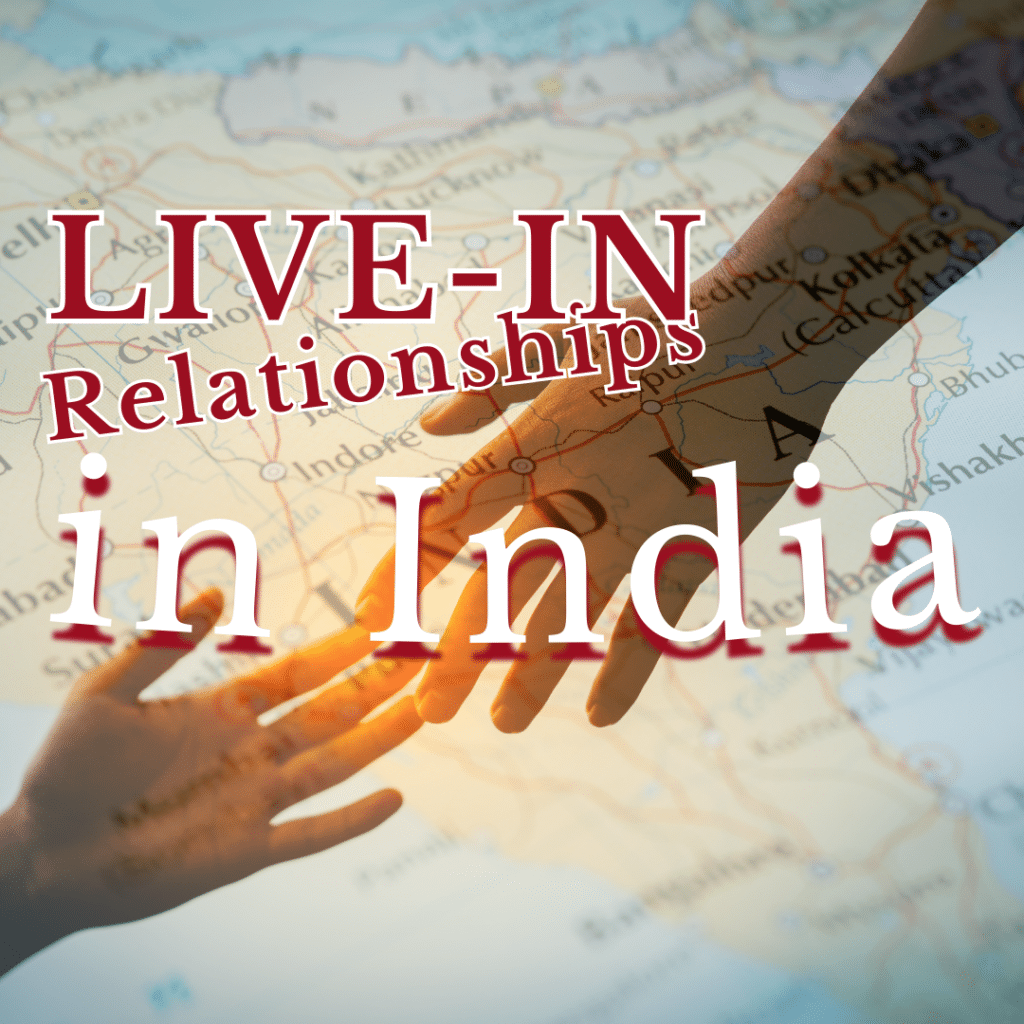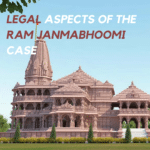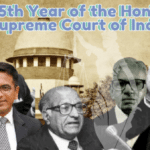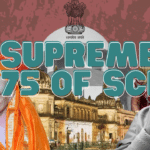
Authored by – Simran
LIVE-IN RELATIONSHIP IN INDIA
INTRODUCTION
Live-in relationships is a cohabitation of two individuals i.e. living together for a long time or permanently in a romantic and sexual relationship without marriage. The concept of live-in relationships has been a great area of research for socio-legal researchers. It is yet to be determined whether this concept is an old and forgotten concept or a new and yet to be adopted concept.
There has been a great influence of the western culture on Indian society and customs, especially on the youth. For example : migration for better education and employment, etc. It is rightly said that change is the only rule of the society. One such change is the emergence of live-in relationships in Indian society. Now, people want love but not the boundedness of marriage. The idea of a live-in relationship has created a new dimension in the domain of men-women relationship, especially in a nation like India where marriages are viewed as a base to legalise a man-woman relationship. To ascertain their compatibility before entering into a legally binding marriage, people choose to live together. It also becomes easy for them to enter and exit this relationship without undergoing long procedures of the courts.
In India, where the institution of marriage is considered to be sacred, many legal and social issues have arisen related to the live-in relationships which have become the topic of debate.
EMERGENCE OF THE CONCEPT OF LIVE-IN RELATIONSHIPS
In India, the concept of live-in relationships is not new, since these relationships existed in the vedic period also but were of rare occurrence. As in India the marriage has always been regarded as a sacrosanct practice, therefore the live-in relationships were never recognised.
In the Vedic period, there was a Gandharva form of marriage in which the man and woman were required to give a verbal commitment without performing any other ritual. This was considered to be a marriage.
In modern times, the concept of live-in relationships in India emerged from the influence of the western culture. Though this is opposed by many in the society, it now demands legal recognition.
LAWS IN INDIA THAT GOVERN LIVE-IN RELATIONSHIPS
Marriages are mostly governed under personal laws of individuals. Although the law does not explicitly recognise the idea of live-in relationships, Indian courts have repeatedly maintained the legitimacy of such relationships while separating morality from the spirit of the law and taking constitutional norms into account.
Article 21 of the Indian Constitution is where live-in relationships get their legal foundations. This unalienable basic right leads to the right and freedom of choice to choose to marry or live with someone of one’s own free will. Under the Indian constitution, the people of India are granted fundamental rights. The freedom of speech and expression, as well as the right to live and settle anywhere on Indian Territory, are essential rights guaranteed under article 19 of the Indian Constitution. However, such rights are not absolute.
In the case of Badri Prasad v. Director of Consolidation , the Supreme Court of India granted legal legitimacy to a couple’s 50-year live-in relationship. This was the first instance when the court acknowledged a live-in relationship as a genuine marriage. In 2010, the Supreme Court said that a live-in relationship is covered by the Indian Constitution’s Article 21 right to life. The Court also ruled that cohabitation is acceptable and that it is not illegal or criminal for two adults to live together.
Pre-marital sex is contemned in Indian culture. Couples living together prior to marriage are hence frequently viewed as culturally incorrect, immoral, and revolting to societal standards. The notion of live-in relationships so continues to confront social aversion based on conservative beliefs, despite the fact that some have publicly accepted it.
IS IT POSSIBLE FOR A MARRIED PERSON TO LIVE IN A LIVE-IN RELATIONSHIP?
This question came up when section 497 of IPC was struck down by the Supreme Court of India. Section 497 of IPC defined “adultery” as an offence.
- The High Courts of Bombay, Allahabad and Rajasthan had different viewpoints in providing protection to such live-in couples, citing the fact that a live-in relationship between a married and an unmarried person is unlawful.
- The Punjab and Haryana High Court first took things a step further and labelled these partnerships as undesirable, asserting that they damage the “social fabric” of the nation.
- The Delhi High Court, on the other hand, disagreed and took a broader stance, affirming a female live-in partner’s rights regardless of the marital status of both parties.
In a recent ruling, the Punjab and Haryana High Court held that, prima facie, no offence would be committed by the parties, being adults in a live-in relationship with each other, whether or not any divorce petition was pending before the court, disagreeing with the decision of the Allahabad High Court that held the live-in relation between married persons without having been divorced u/s 494 IPC as offence. The stance was adopted by relying on the Supreme Court’s decision in Joseph Shine (Supra).
ANALYSIS :
The answer of the aforementioned question lies in the Hindu Marriage Act, 1955.
Section 5 of Hindu Marriage Act, 1955
It states the conditions for the Hindu Marriage. Under this section, it is stated that a person cannot marry another if he/she has a living spouse at the time of marriage.
Section 11 of Hindu Marriage Act, 1955
It states that a marriage which contravenes section 5 of Hindu Marriage Act, 1955 will be void.
Section 17 of Hindu Marriage Act, 1955
This section provides for punishment of bigamy. The punishment for bigamy has provisions under section 494 and 495 of IPC also.
Therefore, if live-in relationships are to be recognised as valid marriages, then the provisions of the Hindu Marriage Act must be followed. Also, it is a biassed viewpoint to let married women continue in a live-in relationship and not men.
APPLICABILITY OF DV ACT
Domestic relationship is defined as a relationship between two people who now share a home or have previously shared a home, regardless of whether they are related by marriage, consanguinity, adoption, or any other type of relationship in the nature of marriage. Live-in relationships can occasionally result in an undesirable style of living where there may be harassment or abuse. The government pays attention to this issue. Therefore, the Protection of Women from Domestic Violence Act, 2005 (PWDV), recognises live-in partnerships by providing rights and protection to females who are not legally married but are instead cohabitating with a male person.
There are certain requirements for a live in relationship to be considered
valid:
RIGHT TO MAINTENANCE
If a husband refuses to provide for his wife, she may file a maintenance claim under Section 125 of the CrPC. In the event that a woman is successful in proving that her connection has the characteristics of a marriage, the court may infer that the woman is a wife and grant her the right to maintenance from that partner. The Supreme Court stated that a man should be held responsible for maintaining a woman if he deserts her in circumstances where he has lived with her for a significant amount of time even if they may not have met the legal requirements for a legitimate marriage.
However, there can be issues if we assume that any long-term live-in relationship is of the same character as marriage because there might be additional legal obstacles to such a union under other laws or personal law.
LEGITIMACY OF CHILDREN BORN OUT OF LIVE-IN RELATIONSHIPS AND THEIR RIGHT OF INHERITANCE
The children who are born out of live-in relationships are considered legitimate if there is a presumption of marriage under Section 114 of the Evidence Act. These children are also entitled to the property of their ancestors.
CONCLUSION
Individuals in live-in relationships are not protected by a system of laws or standards because of legislative ignorance. The existing live-in relationship legal structure in India is largely a product of a number of rather progressive judicial judgments.
These judicial decisions provide a framework for controlling and directing legal matters arising from live-in partnerships, but they are insufficient. Recent incidents have shown that the judiciary has made varying and inconsistent rulings as a result of the absence of clear law and the resulting uncertainty. As a result, the Legislature must take into account how common live-in relationships are and pass a detailed statute outlining each party’s rights and obligations.
Although live-in relationships may be considered sinful by the traditional Indian society, they are not against the law. Such live-in relationships are not either encouraged nor condemned by the Indian judiciary. In a specific instance, the judiciary is merely dispensing justice in line with the law.





